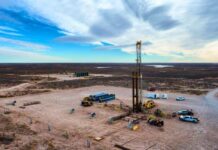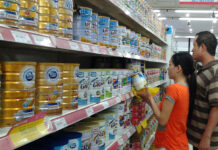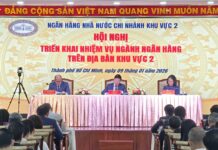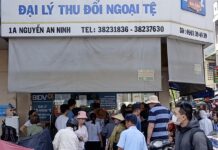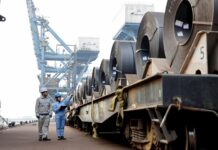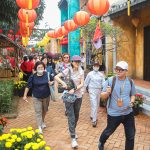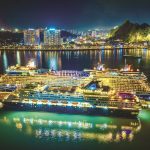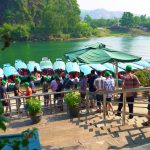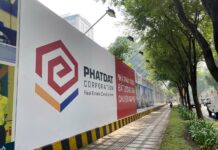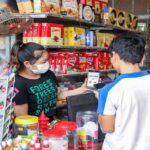“There is a need to continuously innovate and improve to stay ahead in the tourism industry.”
Da Nang is known as one of the tourism capitals of Vietnam. Recently, Resolution No. 136/2024/QH15 on urban administration and pilot mechanisms and policies for the development of Da Nang city was passed. Do you think this presents a new opportunity for Da Nang’s tourism industry to thrive and compete regionally?
Da Nang possesses all the elements to become a tourism magnet: stunning natural scenery, iconic tourist attractions, friendly locals, delicious cuisine, affordable living costs, and convenient transportation infrastructure.
Recently, Da Nang has introduced new products such as art performances, pedestrian streets, and night markets. However, from another perspective, Da Nang also has the potential to develop large-scale economic zones dedicated to entertainment, dining, shopping, and more. Without the right mechanisms in place, achieving success in this regard would be challenging.
I believe that these special mechanisms provide an opportunity for Da Nang’s tourism industry to make a significant leap forward. In fact, Da Nang has been recognized as a national tourism center since 1995 when we first developed the planning and strategy for Vietnam’s tourism development. However, for many years, Da Nang has only served as a gateway to the country in the central region, rather than becoming a destination in its own right. With these new special mechanisms, we can confidently expect Da Nang’s tourism industry to climb to new heights in the coming years.
While Da Nang boasts attractions such as Ba Na Hills, Golden Bridge, InterContinental Danang, and the international fireworks festival, some argue that the city needs fresh, innovative, and high-quality products to remain competitive in the fierce tourism market. What are your thoughts on this?

PGS.TS Phạm Trung Lương, former Vice Director of the Institute for Tourism Research.
I believe that it is natural for destinations to have development cycles. Da Nang has not yet reached its peak in terms of its current tourism products, and there is still significant potential to attract more visitors. However, according to tourism planning, each product has its life cycle. We must clearly identify the peaks and troughs of this cycle to prepare for continued investment and renewal. This involves upgrading existing products or investing in new and exciting offerings to extend the tourism cycle. This is a fundamental principle in tourism development.
Returning to the context of Da Nang, the peak value of the destination’s life cycle remains favorable due to the enduring appeal of established products such as Ba Na Hills and the beachfront resorts. This indicates that these products will continue to thrive and evolve. While this provides some reassurance for the coming years, Da Nang must also assess its market positioning in the long run. Are the city’s current tourism products truly world-class and worthy of its aspirations?
To maintain its position as an attractive destination, Da Nang should leverage its natural advantages and, more importantly, its policy strengths to develop distinctive and exceptional new products. I believe that large-scale economic zones dedicated to entertainment, dining, shopping, and free trade areas present a unique opportunity for Da Nang to create outstanding and unparalleled tourism offerings.
When looking at world-class tourism models, such as the Genting Highlands in Malaysia, do you think Da Nang needs to strive for such high-caliber developments to seize the opportunities presented by this new phase of growth?
I think Genting in Malaysia primarily focuses on casinos, which, in turn, drives the development of accommodation and other services. They have up to seven resorts to cater to casino patrons and long-stay visitors. In Vietnam, and specifically in Da Nang, we are still in the experimental phase, which, in my opinion, has gone on for too long.
Now, with the special mechanisms granted by the state for Da Nang, the local government should boldly consider developing this model on a larger and more systematic scale, moving beyond the experimental stage. Additionally, Da Nang needs to implement policies that support the development of a vibrant night-time economy if it aspires to truly flourish in the tourism sector. I believe that Da Nang should adopt a bolder perspective. The local government has a reputation for being dynamic and proactive, so I am confident that with the range of open and progressive mechanisms permitted by the state, Da Nang will maximize these opportunities to enhance its development. This includes elevating the scale and depth of tourism zones with innovative and bold products.
Balancing Interests in Tourism Development
Da Nang is blessed with mountains, rivers, seas, and forests, offering vast potential for tourism development. Creating favorable conditions for investing in new tourism products should also be based on leveraging these natural strengths. How do you view the balance between development and preserving these natural values, Mr. Luong?
We must strike a balance between development goals and preserving and promoting natural values. For example, in the case of Ba Na Hills, we would not have had the space to build the current array of products without trading off some land area. In fact, since the French colonial era, developments have been constructed on Ba Na Hills as a mountain resort.
Many tourism zones today are developed in harmony with their natural surroundings. Ba Na Hills and InterContinental Danang are exemplary cases. Additionally, we can mention Amanoi in Ninh Thuan, a resort located within the core zone of a biosphere reserve, which operates successfully while respecting nature. In these projects, each tree is carefully considered, and decisions are made whether to remove, retain, or adjust the tree’s position to coexist with the built environment…
Undoubtedly, development entails certain trade-offs, especially when constructing technical infrastructure to support tourism. We must consider compensatory measures such as planting more trees, creating high-quality green spaces, and developing exceptional projects that match the value of the natural environment.
In the context of tourism development, it is essential to balance interests: benefiting the locality, the local people, and businesses. What are your thoughts on this matter, Mr. Luong?
To foster further development, Da Nang must always consider interests—not only economic and social interests but also the interests of businesses that partner with the locality. Businesses invest with expectations of returns, and their interests must be taken into account. However, in today’s competitive landscape, attracting capable businesses to collaborate is no easy feat. Da Nang has the advantage of special policies, and it is essential to leverage these state-permitted mechanisms to consider policies that benefit businesses, especially those that have persevered with the locality through challenging times.
I would like to mention Sun Group as an example of a responsible enterprise in Da Nang. They continue to invest in the city, contributing not only to the fireworks festival but also to night-time shows and performances. In my opinion, Sun Group has a visionary approach, and they stand by the locality, investing not just for short-term gains. Da Nang should appreciate and treat such enterprises fairly. When other businesses witness this, they will be encouraged to invest in Da Nang as well. This will naturally attract more capable enterprises, bringing significant value to the city.
Thank you, Mr. Luong, for your valuable insights!
Da Nang experiences a bustling influx of tourists during Tet, generating nearly 1.6 trillion VND in tourism revenue.
According to Vietnam’s leading newspaper, Tien Phong, on February 14th (the 5th day of Lunar New Year), the Department of Tourism announced that the city welcomed nearly 402,000 visitors during the 7-day Lunar New Year holiday.

